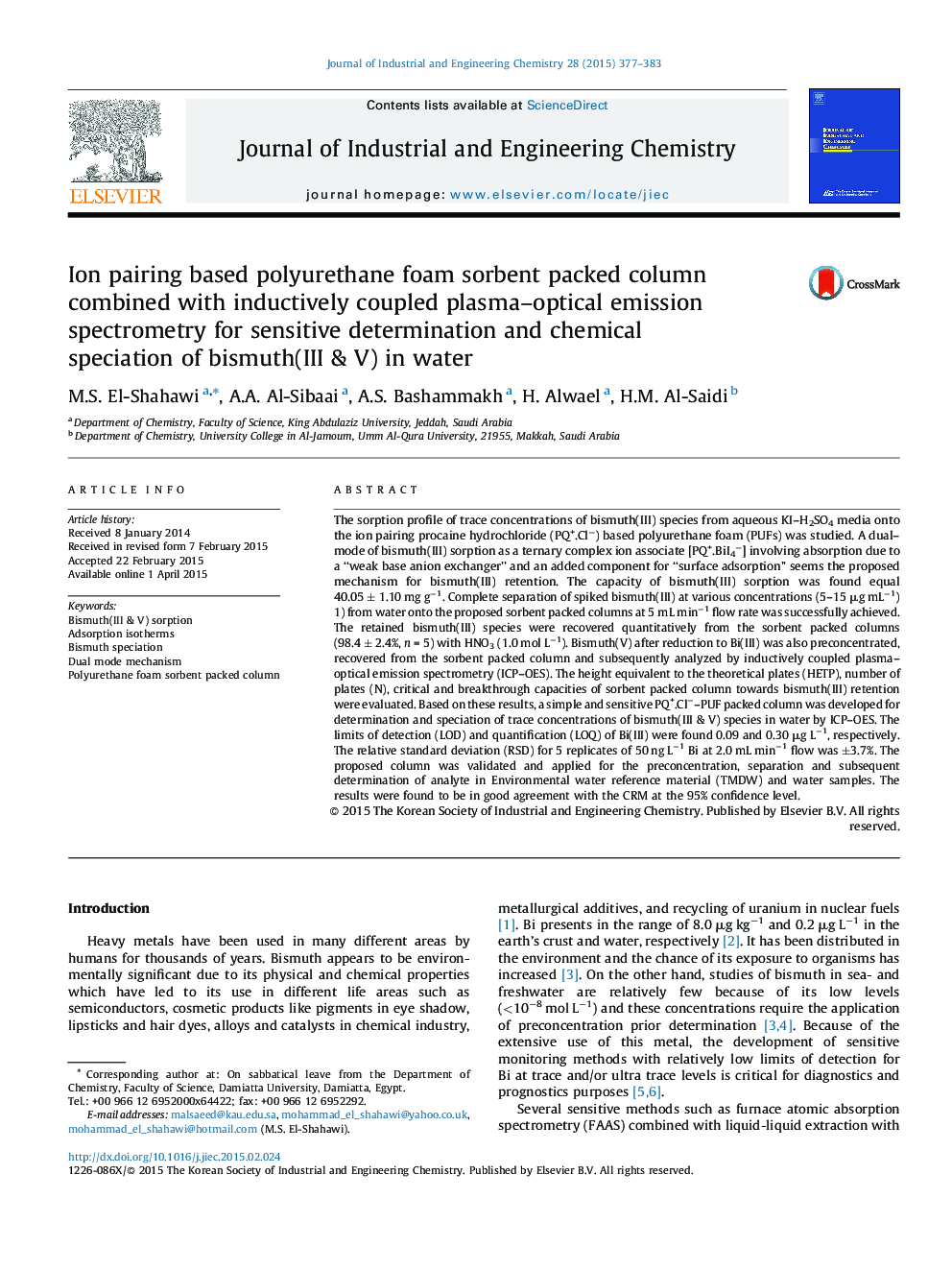| Article ID | Journal | Published Year | Pages | File Type |
|---|---|---|---|---|
| 6669764 | Journal of Industrial and Engineering Chemistry | 2015 | 7 Pages |
Abstract
The sorption profile of trace concentrations of bismuth(III) species from aqueous KI-H2SO4 media onto the ion pairing procaine hydrochloride (PQ+.Clâ) based polyurethane foam (PUFs) was studied. A dual-mode of bismuth(III) sorption as a ternary complex ion associate [PQ+.BiI4â] involving absorption due to a “weak base anion exchanger” and an added component for “surface adsorption” seems the proposed mechanism for bismuth(III) retention. The capacity of bismuth(III) sorption was found equal 40.05 ± 1.10 mg gâ1. Complete separation of spiked bismuth(III) at various concentrations (5-15 μg mLâ1) from water onto the proposed sorbent packed columns at 5 mL minâ1 flow rate was successfully achieved. The retained bismuth(III) species were recovered quantitatively from the sorbent packed columns (98.4 ± 2.4%, n = 5) with HNO3 (1.0 mol Lâ1). Bismuth(V) after reduction to Bi(III) was also preconcentrated, recovered from the sorbent packed column and subsequently analyzed by inductively coupled plasma-optical emission spectrometry (ICP-OES). The height equivalent to the theoretical plates (HETP), number of plates (N), critical and breakthrough capacities of sorbent packed column towards bismuth(III) retention were evaluated. Based on these results, a simple and sensitive PQ+.Clâ-PUF packed column was developed for determination and speciation of trace concentrations of bismuth(III & V) species in water by ICP-OES. The limits of detection (LOD) and quantification (LOQ) of Bi(III) were found 0.09 and 0.30 μg Lâ1, respectively. The relative standard deviation (RSD) for 5 replicates of 50 ng Lâ1 Bi at 2.0 mL minâ1 flow was ±3.7%. The proposed column was validated and applied for the preconcentration, separation and subsequent determination of analyte in Environmental water reference material (TMDW) and water samples. The results were found to be in good agreement with the CRM at the 95% confidence level.
Keywords
Related Topics
Physical Sciences and Engineering
Chemical Engineering
Chemical Engineering (General)
Authors
M.S. El-Shahawi, A.A. Al-Sibaai, A.S. Bashammakh, H. Alwael, H.M. Al-Saidi,
